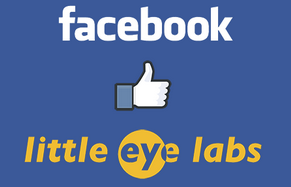 Sprint's new "Spark" network architecture, which leverages carrier aggregation, is now available in 11 markets across the U.S. with peak downlink speeds of 60 Mbps.
Sprint's new "Spark" network architecture, which leverages carrier aggregation, is now available in 11 markets across the U.S. with peak downlink speeds of 60 Mbps.Sprint Spark uses carrier aggregation to combine FDD-LTE at 800 MHz and 1.9 GHz with TDD-LTE at 2.5GHz. Sprint Spark is now available in the following 11 markets: Austin, Texas; Chicago; Dallas; Fort Lauderdale, Fla.; Fort Worth, Texas; Houston; Los Angeles; Miami; New York; San Antonio, Texas;
Tampa, Fla..
The first devices to support Sprint Spark include:
- LG G Flex -- the new curved, flexible smartphone. It will take advantage of the Sprint Spark network. It also comes with a 3,500mAh battery and offers up to 29 hours of talk time.
- NETGEAR LTE Gateway 6100D -- a fixed wireless router for businesses that is positioned as a back up Internet service to avoid outages. It could also be used to replace primary Internet service in the office because it can connect up to 80 Wi-Fi users while using the high-speed capabilities of Sprint Spark. It features Power over Ethernet, WAN to WWAN failover, TR-069 remote management, advanced Wi-Fi encryption and VPN capability.
- NETGEAR Mingle Mobile Hotspot -- the first tri-band device available for prepaid customers in the United States. It will be available this quarter on Virgin Mobile’s competitive Broadband2Go no-contract plans, which include daily service on Sprint’s 3G/4G LTE networks (where available) for $5/day. Broadband2Go also offers monthly data plans for $25 with 1.5GB or $55 with 6GB.
Sprint plans to deploy Sprint Spark in about 100 of America’s largest cities during the next three years. The service is expected to cover 100 million POPs by the end of the year.
http://faster.sprint.com/?ECID=vanity:faster
In October 2013, Sprint demonstrated 1 Gigabit per second (Gbps) over-the-air speeds at its lab near Silicon Valley, California.
Sprint claims that it is technically feasible to deliver more than 2 Gbps per sector of over-the-air speed given its extensive spectrum licenses, especially in the 2.5 GHz band.
high-speed capability demonstrates 50-60 Megabits per second (Mbps) peak speeds today with increasing speed potential over time. Given Sprint's spectrum and technology assets, it is technically feasible to deliver more than 2Gbps per sector of over-the-air speed.
"Sprint Spark is a combination of advanced capabilities, like 1x, 2x and 3x carrier aggregation for speed, 8T8R for coverage, MIMO for capacity, TDD for spectral efficiency, together with the most advanced devices offering both tri-band capability and high-definition voice for the best possible customer experience," said Dan Hesse, CEO of Sprint.
Some other key points of the October 2013 announcement:
- Sprint current has approximately 55,000 macro cell sites and plans to stay at this level for the next few years.
- A rollout of small cells beginning next year will augment capacity, coverage and speed.
- Alcatel-Lucent, Nokia Solutions and Networks and Samsung have been selected to provide 2.5GHz radio heads and to enable Sprint Spark. Each company will service approximately one-third of Sprint's deployment markets.
- The 2.5GHz radios are expected to have capabilities for 8 Transmitters 8 Receivers (8T8R), which will be a first deployment of its kind in North America. These radios will be capable of improved coverage, capacity and speeds when compared to the more traditional 2T2R or 4T4R radios used by our competitors.
- Sprint Spark is designed to accommodate all of Sprint's spectrum bands on a single tri-band smartphone. The first tri-band devices will be available to customers in the next few weeks and offered by HTC, LG and Samsung.
- Sprint's HD Voice capability, which is also supported on 3G, reaches approximately 85 million people across the Sprint network today, and the company expects 250 million to have access to HD Voice capability by mid-2014. Sprint expects 12 million HD Voice devices in the customer base by the end of 2013, growing to 20 million by the end of 2014.


























